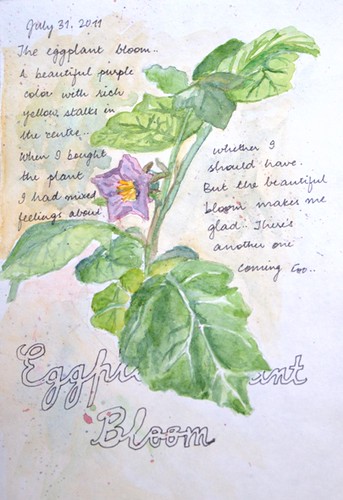 |
| Ready to be painted on.. |
 |
| New sketchbook meets my old sketchbook :) |
Ah! My sketchbook is ready! Here is my new friend.. All hand bound – with some favorite cover papers. The whole binding journey was interesting! You would already know if you have ‘read’ about
what I am up to these days and how I stumbled into an interesting
bookbinding site.
Why did I decide to bind one? Hmm, because I was tired of looking around the house for one of the many sketchbooks I am using, because I didn’t have the right media at that time! I’ll pull out watercolor and then go looking for my watercolor sketchbook; or have just pen and wouldn’t want to waste a watercolor page with pen marks on it!
And because I was so totally in awe with the sketchbooks that other artists bind! They look so so yummy! I just had to try it!
I totally recommend anyone who’s been eager yet unsure of binding their own books, to just take the leap! It is not overwhelming – not at all if you do what I did. I combined steps from 2 different places and went ahead. And some reading of binding experiences by other artists through the last few months only helped me make some good choices.
Here’s what I did to get this book up:
What all did I use:
1. Paper (or different papers) of your choice
I used
Drawing paper
Bristol paper
90lb watercolor
140lb watercolor
2.
Patterned/Colored Paper – For the cover of the book. I went by
Dani’s suggestion (from Dani Draws) and bought some scrapbook paper. I used a construction paper strip for the spine.
3. Heavy board – from the back of a couple writing pads that were going to the trash anyway!
4. Glue - Regular white glue
5. Brush to apply the glue.
6. Needle – Regular stitching needle
7. Thread – I used thread from a new dental floss. Or you can use a strong regular thread with beeswax applied on it. I didn’t want to go through all that trouble with no idea what each thing was – but I read from one of the other artists that a dental floss works well since it is strong!
8. Knife for cutting paper
9. Cutting board – a must
10. Ruler
11. Awl / thumbtrack to make holes.
12. Ribbon – optional; for a bookmark or so.
13. Elastic band – optional; I didn’t use it – it can keep your pages together when you are drawing.
14. Paper towels for wiping excess glue.
1. Book Block – Either site
2. Creating Signatures – Either site
1. Cutting cover board
2. Cutting Spine board
3. Cover paper
4. Spine paper
5. End paper
6. Gluing
Note: I followed the instructions given in Dani’s page for most part of the binding. It is explained in a simpler fashion compared to some other sites that I had visited. She has some good pictures to support her steps too. So I cut my paper and created my signatures. But I got confused when I came to the stitching steps. So I followed
Moleskine Reloaded for the steps Punching and Stitching. There you have a lot of detail in explanation. Am I contradicting myself? Well, I needed some detailed explanation when it came to stitching the pages. But only for that.
I came back to
Dani Draws for Trimming and the rest of the steps.
 |
| End papers |
 |
| Ribbon bookmark |
 |
| Sketchbook |
 |
| Pages |
 |
| Closing end papers |
Good choices
1. For the sake of simplicity, I just took papers of the size and bent them into half. I didn’t bother with making them into a 5X7 or so sized paper. This is only my first sketchbook after all!
2. Kept it simple – bought nothing costly or fancy. Used paper that was there at home.
Bad choices
1. Started with no cutting board but a soft board. In no time, my table was marked with a couple of scratches!
Hope it was all helpful :) and hope you enjoyed reading through it!













